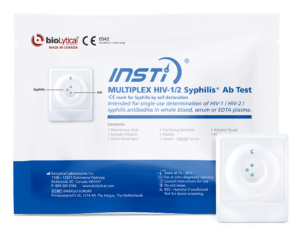As you can see, the risk exposure varies by prevention and treatment. And while caution and preventative measures should always be taken, seeing the risk laid out helps people make informed decisions.
We wrote a few weeks ago about how HIV is transmitted and why there is more risk for different sexual activities. For example, anal sex is riskier due to possible tears in the rectum’s thin lining.
One thing to consider is that while at first glance, it may look like the risk is low (such as with vaginal, female-to-male-sex at 0.04%), risks do add up over time. Even small risks can lead to a higher lifetime risk of getting HIV. Also, it is important that you talk to the person you are engaging in sexual behaviour with, and both get tested for all STIs to make healthy, informed decisions.
Chance of Getting HIV From One Encounter
It would be great to know how many times it takes to get HIV, but unfortunately, there is no guarantee that even with a risk of less than 1%, that someone will not get HIV from one encounter. So, even though there is a relatively small chance of getting HIV from a one-night stand or engaging in sexual activity with an infected partner once, the overall chance of getting infected increases with repeated exposure. Additionally, suppose the HIV-negative partner has an STI. In that case, the risk of getting HIV from an infected partner is higher, partially due to the possibility of having an open sore or ulcer.
As you can see, the most significant risk of exposure is non-sexual through a blood transfusion. So, while sexual activity is a major source of transmission, with proper preventative measures, the risk can be lowered. However, as with anything, understanding the risk is critical in making the choice that is right for you, and the only way to know for sure if you have HIV is to get tested.
Sexual Activities
As you can see in the table, though there is a risk with all types of sexual behaviour, some activities are riskier than others. For example, while you can get HIV from oral sex, the chances are significantly lower than anal sex, especially when not using a condom or if the partner is not on treatment.
While any exposure can lead to an HIV infection, there is no specific timing of how long it takes, such as whether you can get HIV in 20 seconds. The best way to approach the risk is to make sure you know your status and your partner’s and take the necessary precautions to prevent transmission, such as using condoms and if one partner is infected, taking PrEP/PEP, and ensuring the infected partner is on ART.
Non-Sexual Exposure to HIV
It is always a good reminder that you cannot get HIV from a toilet seat, through the air, from casual contact such as hugging, or saliva (or mosquito bites, either!)
Risks by Demographics
In addition to the risk levels by sexual activities, there are also different risk levels by demographic.
- Communities: If your community where you live has a higher HIV infection rate, your chance of exposure increases – especially if you share needles (or other injection equipment) or engage in riskier sexual activities – remember to get tested regularly if you are sexually active with multiple partners
- Population Groups: In western countries, such as the US and Canada, men who have sex with men (MSM) are the groups most affected by HIV
- Risk Behaviours: Groups who engage in risky behaviour such as sharing needles and injection equipment
It is also worth noting that racism, discrimination, homophobia, and overall stigma also impact different groups and their risk. Lack of trust in the medical community, decreased access to healthcare, and language and cultural barriers can also play a significant role in the overall risk level of a community or group.
Are the Symptoms of HIV Different by Gender?
While women and men can present differently with diseases and infection, as with males, there is no way to know if a female has HIV besides getting tested. While there are symptoms of contracting HIV, not everyone has symptoms. Testing is the only way to know. Some of the symptoms are:
- Lack of energy or fatigue
- Weight loss
- Frequent low-grade fevers and night sweats
- Frequent yeast infections (in the mouth, often called thrush)
- Skin rashes that are hard to heal
- Short-term memory loss
Do Condoms Prevent HIV?
While condoms help prevent HIV, they are not 100% effective against HIV. Some studies show that condom use during vaginal and anal sex with one HIV-positive partner is around 70% effective. This is why there are some cases where someone used a condom and still got HIV. So, while condoms are effective (and still protect against other STIs and unwanted pregnancies), they are not as effective as treatment or a combination of both.
Treatment
There are ways to help reduce your exposure to HIV. Of course, the most effective is if the HIV-infected partner takes ART. There is virtually no chance of transmitting HIV to your partner with an undetectable viral load. Even with a detectable viral load, the risk reduction is significant with the partner on treatment.
U=U (Undetectable equals untransmissible)
In 2016, a major global study called PARTNERS (peer-reviewed) of over 900 couples who had sex without condoms over 58,000 times found zero transmission of virus between serodiscordant couples where the partner living with HIV had undetectable levels of virus. In 2017, the Centers for Disease Control and Prevention declared that individuals with durably undetectable viral load could not transmit HIV through their blood or sexual fluids. Health Canada has also recognized that “people living with HIV who take ART and who achieve and maintain an undetectable viral load have effectively no risk of transmitting HIV sexually.”




